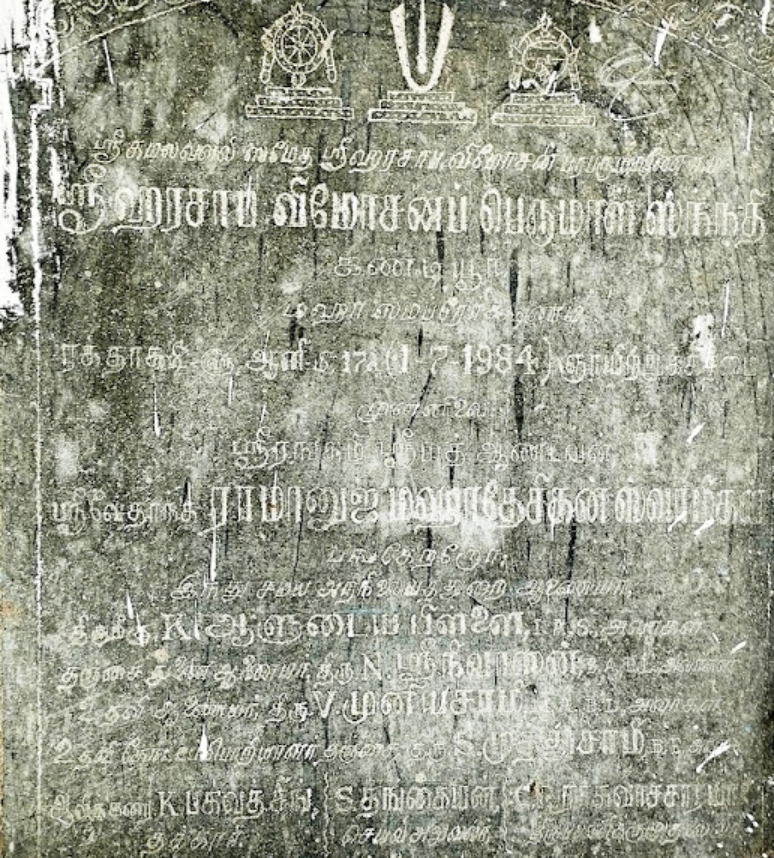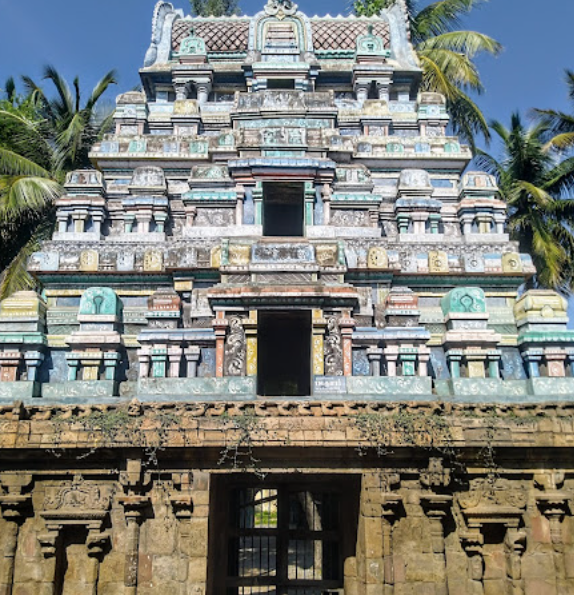Origin :-
According to scriptures, the temple was built by King Mahabali. The original Hara Saabha Vimocchana Perumal Temple dates back to the 7th to 9th century Pallava period. It was later reconstructed during the Chozha period and received contributions from the Vijayanagara, Thanjavur Nayaks, and Marathas. The Vavval Nethi Mandapas were added during the Maratha period.
Renovation work began on June 5, 1981, and a major renovation (Jeernodhara Maha Samprokshanam) was completed on July 1, 1984, costing approximately Rs 2 lakhs.

Maha Samprokshanam was performed on June 11, 2003, with Srirangam Srimad Andavan (SriMushnam) Sri Rangaramanuja Desikan in attendance. Renovation work began on November 1, 2000. The construction of the Rajagopuram, Moolavar, and Thayar Sannidhi Vimanas was sponsored by Sriman S. Badri Narayanan, Ravi Narayanan, and Poondi Rukmani.

The Kannadi Room was sponsored by Sampath and Usha Sampath in memory of their son S. Sathyanarayanan on June 11, 2003.
The Paramapada Vayil wooden door was sponsored by Srimushnam Srimad Andavan Srimad Ranga Ramanuja Mahadesikan on March 28, 2007.
The zinc sheet mandapam in front of the Kamalavalli Thayar Sannidhi was sponsored by Kandiyur Kidambi Srimathi Rajalakshmi Sriraman from Nanganallur, Chennai on July 6, 2014.

Puranic Significance :-
- Thala Saritram 1 :
Brahma had learned five powerful mantras from Goddess Parvati and used them to create great power. However, he became arrogant and proud, which concerned Shiva. Observing Brahma’s pride and seeing the spherical fifth head of Brahma rolling in ego, Shiva became angry.
Shiva questioned Brahma’s arrogance, thinking about how ordinary people would fare if Brahma, who is supposed to embody Vedic knowledge, acted so arrogantly. When Brahma defied him, saying they were equals because both had five faces, Shiva's anger intensified. In a furious moment, Shiva grabbed Brahma’s fifth head, which was still filled with ego, and twisted it off. This act removed Brahma’s pride and ego, showing that even the greatest beings are not above humility.
- Thala Sarithiram 2 :
Once, Goddess Parvati, while meditating on Kailasa, mistakenly did foot puja to Brahma, thinking he was Shiva. Brahma accepted this honour, but when Shiva arrived and saw what was happening, he became angry. Realising her mistake, Parvati understood that Brahma’s five heads were causing the confusion. In her anger, she removed one of Brahma’s heads.
This act left Shiva with Brahma’s skull (Kapala) attached to his hand, causing him to bear the curse of Brahmahati Dosha. Despite various efforts to rid himself of this curse, the skull remained a burden.
Eventually, Shiva was advised to go to Kandiyur, bathe in the Padma Theertha, and worship Kamalavalli Nachiyar and Vishnu there. Following this advice, Shiva went to Kandiyur, where he was freed from the curse. Because of this, he is known as 'Harasaba Vimosana Perumal', the one who relieved Shiva of the curse.
